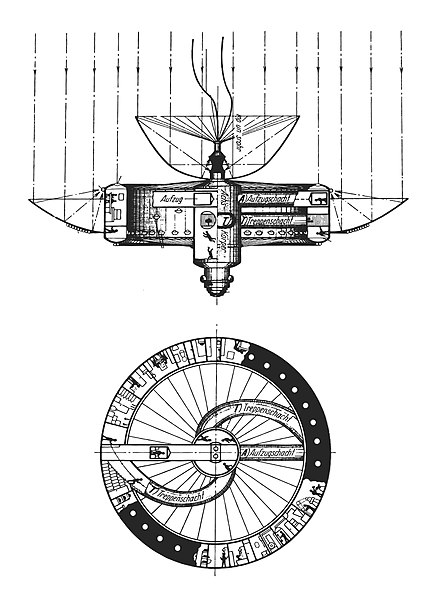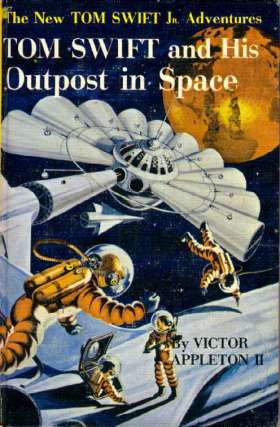http://en.wikipedia.org/wiki/Herman_Poto%C4%8Dnik wrote:
<<
Herman Potočnik (pseudonym Hermann Noordung) (December 22, 1892 - August 27, 1929) was a Slovene rocket engineer and pioneer of cosmonautics (astronautics). At the end of 1928, he published his sole book, Das Problem der Befahrung des Weltraums - der Raketen-Motor (The Problem of Space Travel - The Rocket Motor) in Berlin. The publisher,
Richard Carl Schmidt, printed the year 1929 as a publishing date, probably from a purely business motive (to keep the book looking new throughout the coming year) and this date is often mistakenly given as the actual date of publication. In 188 pages and 100 handmade illustrations, Potočnik set out a plan for a breakthrough into space and the establishment of a permanent human presence there. He conceived a space station in detail and was the first man to calculate the geostationary orbit, on which the station would orbit the Earth. He described the use of orbiting spacecraft for detailed observation of the ground for peaceful and military purposes, and described how the special conditions of space could be useful for scientific experiments. Potočnik expressed strong doubts of the potentially destructive military use of these fresh discoveries.
The book was translated into Russian in early 1935, Slovene in 1986 (by the Slovenska matica), English in 1999 (by NASA) and Croatian in 2004 (by Marino Fonović, published by Labin Art Press). A partial translation in English, containing most of the essential chapters, was made as early as 1929 for the American magazine Science Wonder Stories and was issued in three parts (July, August and September 1929).
With his many ideas he became one of the founders of astronautics. His concepts were first taken seriously only by the amateur rocketry movement in Germany, the Verein für Raumschiffahrt (VfR - "Spaceflight Society"), centered on Hermann Oberth and his co-workers. In its Russian edition, the book may also have influenced Sergey Korolev's circle. More locally, Viennese engineers dismissed his work as fantasy.
Potočnik's book described geostationary satellites (first put forward by Konstantin Tsiolkovsky) and discussed communication between them and the ground using radio, but fell short of the idea of using satellites for mass broadcasting and as telecommunications relays (developed by Arthur C. Clarke in his Wireless World article of 1945). The wheel-shaped space station served as an inspiration for further development by Wernher von Braun (another former VfR member) in 1953. Von Braun saw orbiting space stations as a stepping stone to travel to other planets. In 1968, Stanley Kubrick's ground-breaking film, 2001: A Space Odyssey, depicted such a role for "Space Station V.">>
Description of a space station in
Hermann Noordung's The Problem of Space Travel (1929).

(Legend: Achs-Körper: axle body. Aufzugschacht: elevator shaft. K: electric cable to an external observatory. Kondensatorrohre: condenser pipes. S: airlock. Treppenschacht: stairwell. Verdamfungsrohr: boiler pipe).>>
 Geostationary Highway
Geostationary Highway

